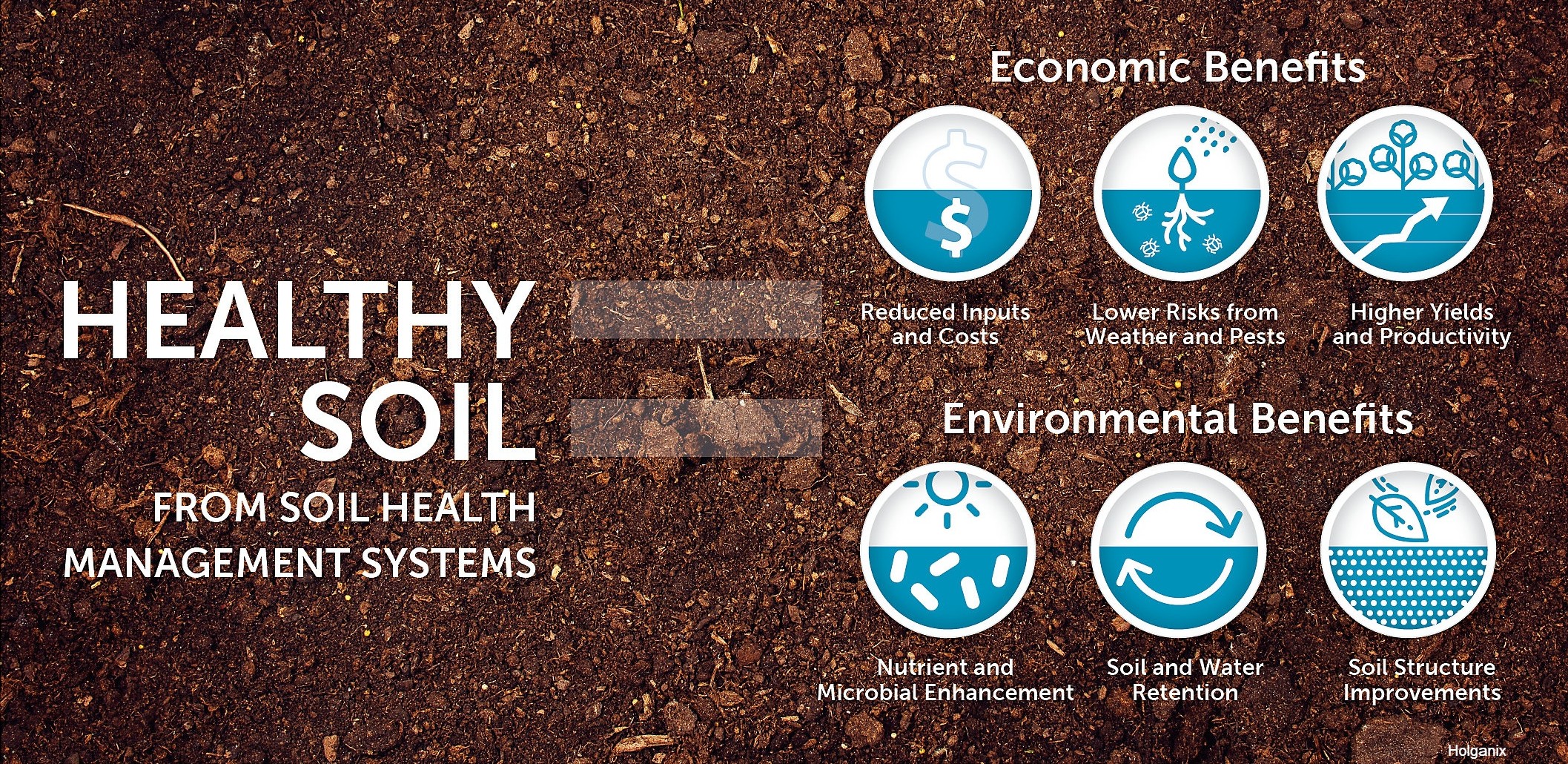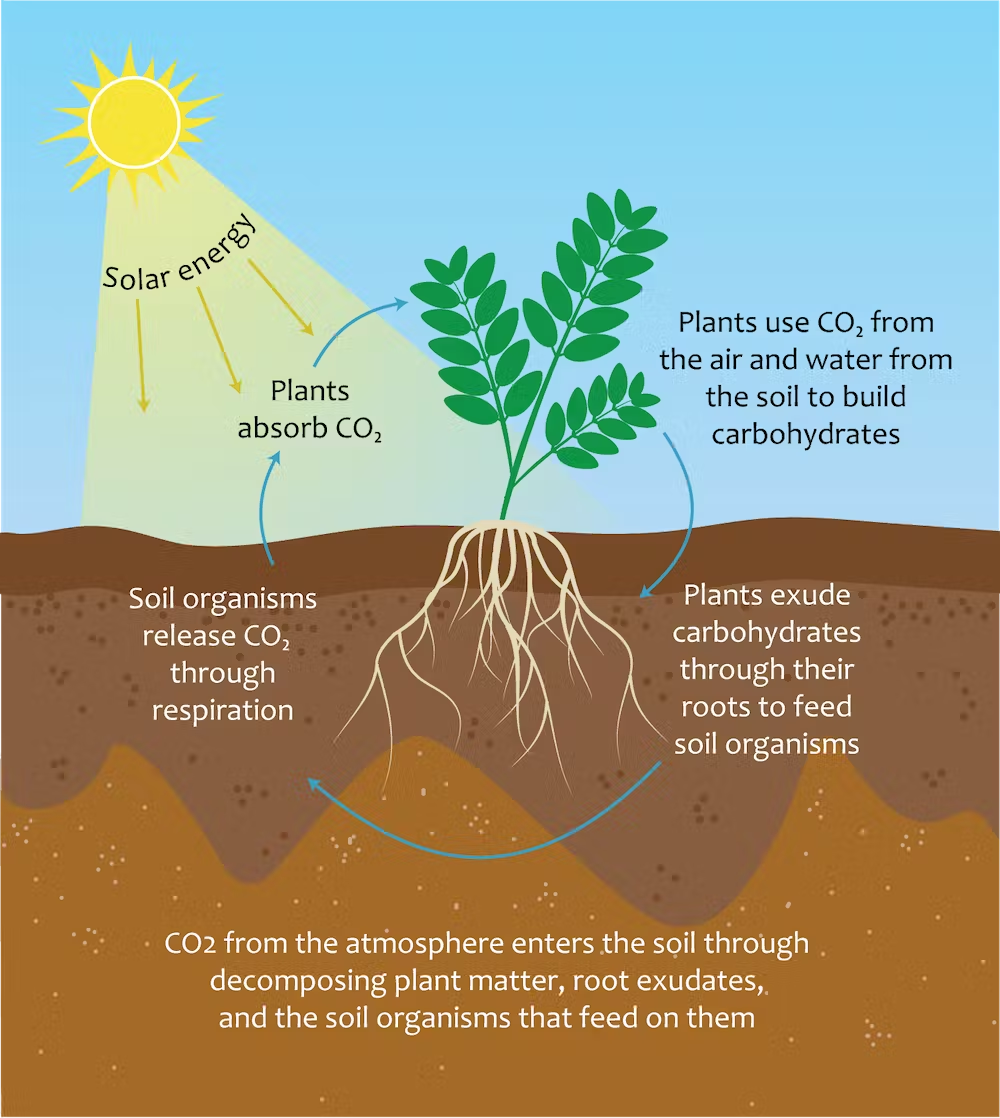Have you ever thought about the effects of getting carbon into the soil?
Did you know that a 1% increase in soil organic carbon equates to about a 2% increase in water holding capacity? So a soil with a water holding capacity of 200mm will hold an additional 4mm of water.
There is currently interest in the transfer of carbon from the atmosphere back into the soil. Farmers are beginning to look at carbon markets, just as they look at crop markets to improve their bottom line.
So then we come to the question, how does carbon get into the soil?
Much of carbon in the soil is in the form of other organic matter like microbes, fungi and invertebrates as well as roots and decomposing plants. It’s made up of minerals, soil organic matter, living organisms, gas, water and plays a vital role in the global carbon cycle. About 80% of the carbon in the soil has come from the remains of soil microbes. Compounds that were produced by soil microbes, or living soil microbes themselves. Of all the carbon in the soil, roughly five times as much comes from soil microbes fed sugars or other substances provided to them by living plant roots, compared to the carbon from decomposition of above-ground plant residues.
Secondly we ask, how is carbon sequestered in soils? The answer to that is through the process of photosynthesis. Plants assimilate carbon and return some of it to the atmosphere through respiration. The carbon that remains as plant tissue is then consumed by animals or added to the soil as litter when plants die and decompose.
Benefits include;
-Improved soil health: soil carbon sequestration helps restore degraded soils, which can improve agricultural productivity
-Increased climate resilience: healthier soils make farms more resilient against both droughts and heavy rainfall
-Reduced fertiliser use: healthier soils require less fertilizer, saving farmers money and reducing environmental impacts

So, what are the effects of more carbon in the soil? Soil carbon provides a source of nutrients through mineralisation. Which helps to aggregate soil particles (structure) to provide resilience to physical degradation, increase microbial activity, increases water storage and availability to plants, and protects soil from erosion. Improving the soil’s ability to capture and retain carbon not only contributes to mitigating and adapting to climate change but makes land more suitable to sustain biodiversity and preserve food security. Our food systems are extremely vulnerable to climate change, and the world needs resilient soils to produce about 70% more food by 2050 to feed an estimated 9 billion people.
That is when we question, does carbon make soil more fertile? Carbon is the main component of soil organic matter and helps give soil its water-retention capacity, its structure and its fertility. When soils lose their carbon, they become degraded and unable to provide nutrients supporting plant growth and biodiversity. The combination of nutrient loss, erosion and weather variability can lead to dire consequences like desertification, affecting vulnerable groups and leading to displacements as well as famines. Improving land management practices, such as cover cropping, conservation, tillage, agroforestry, and rotational grazing can go a long way in improving carbon, while also decarbonising our food systems.
Could soil be the answer to climate change?
Soil has emerged as a key resource in the fight against climate change, because of its ability to retain carbon.
-The world’s soils capture more carbon than biomass and the atmosphere combined.
-So increasing their ability to store carbon could have a big impact on climate change.
-Scientists say improving soil health could lead to an extra 2 billion tonnes of CO2 being sequestered by 2030.
-The World Economic Forum’s Carbon Market Challenge is seeking new ways to unleash needed innovations to make that happen.
Take a watch of this video on soil carbon drawdown - https://bit.ly/3DTNoE9
References
https://www.weforum.org/agenda/2021/08/carbon-in-soil-key-to-halting-climate-change/
https://www.agdaily.com/insights/understanding-how-carbon-gets-into-the-soil/
https://www.american.edu/sis/centers/carbon-removal/fact-sheet-soil-carbon-sequestration.cfm


.webp)